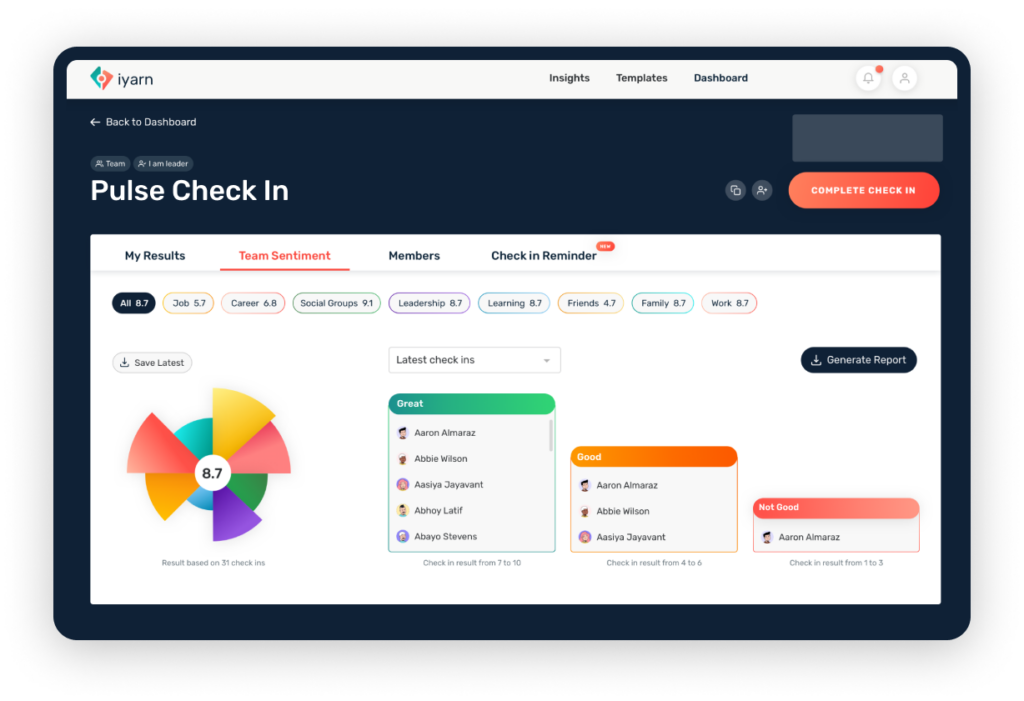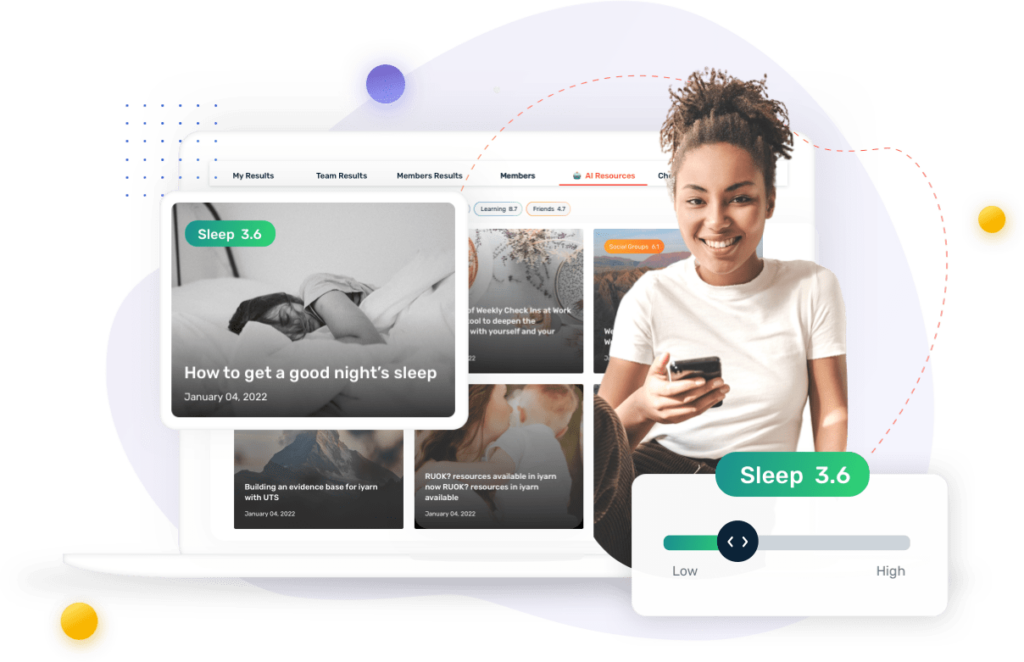New Feature: The Leader Role
If you’ve used iyarn before you’ll know that the admin of a wheel has access to view each member’s check in results on that wheel. You also know that you can easily manage the admin of a wheel by changing a member’s role to an admin role.
We’re excited to announce that we’re adding a new role: The Leader Role. Now with each wheel the admin has the option of changing members of a wheel to be either an admin or a leader of the wheel.
What is the Leader Role?
The leader role is a great option for anyone who wants to see the scores of member’s check ins in a more general sense. While the admin of a wheel can see individuals’ check-in results as a numerical value for each segment of the wheel, a leader can only see the collective results of a check in. The results will show members grouped into three categories: not good, good, and great.
This development is in response to a recognised reluctance among corporations and some school teachers to access individualised data, often due to potential duty-of-care responsibilities. Many organisations, unfortunately, lack adequate training and systems to manage extended wellbeing data safely and effectively.

What do these three categories mean?
Not good: Members who appear in the not good category after a check in entered a score of 1-3 on one or more segments of their check in.
Good: Members who are grouped in the good category scored an average score between 4-6, and didn’t enter below a 3 on any of their individual segments.
Great: Members who end up in the great category scored high on their check in. Their average score between each of the segments was between 7-10.
These categories give leaders a general sense of how members of their wheels are travelling without giving them the added responsibility of knowing how each individual member is going in each individual segment. Leaders can then facilitate meaningful conversations with members of the wheel and members can share as much or little information as they would like to.
School example:
In a school setting, chaplins might choose to be the admin of a wheel and teachers might choose to be a “leader” of a wheel. This decreases the responsibility on the teachers of knowing each individual student’s score while still giving teachers the ability to see how their students are doing overall.
Workplace example:
If you’re a manager of several teams and you have a separate check-in for each team, you might choose to have the team leader be an admin over their team’s check-in wheel. This way, they can see all the details around how the members of their teams are travelling and add you to their team’s check in wheel as a leader– giving you a general sense of how the teams are travelling without the responsibility of keeping track of each staff member’s individual scores.
We’re looking forward to seeing how you implement this new Leader Role feature. Please reach out if you have any questions or are interested in being a part of the beta testing group.




